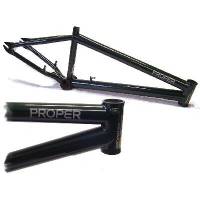
That means you can attach objects to different locations on the source geometry. With help of Rivet SOP I’m able to extract this movement and use it as a parent for an another object:Ī few things to know when using this method:Īs you can see in the parameter window, the rivet it’s pointing to the animation source /obj/box_SOP_animation/OUT, and it also requires you to define a particular point (or multiple points) to attach the rivet to. As an example case I have this simple animation of a box moving along a curve: So as I already mentioned, one easy method to achieve this is using a Rivet SOP.

If you export to different 3d packages it may also be required to have an animation stored as object transforms rather than point deformation – this will result in much smaller cache files, and transforms will remain separate from the actual mesh, which may be essential down the pipe. But the movement must be done on object level. With soft objects like cloth or such, you can’t really avoid it, but with rigid objects, rendering Xform samples is much more efficient, with no visual difference. It may also be important for efficient motion blur rendering – animation done on SOP level is technically a deformation, which requires expensive Geometry time sampling. This may be useful in many cases: attaching a hat to an animated character, or attaching lights to an animated car are the first examples came up in my mind. There is one important difference thou: While Fetch parents two object level nodes together, the Rivet parents an object level node to a SOP level geometry (a point, or group of points, to be precise). Rivet object: from SOP to OBJĪt the first glance the Rivet object may be serving the same purpose as Fetch object – both are parenting elements that are otherwise inaccessible to each other. To take that into account you need to enable Use Parent Transform of Fetched Object option on the Fetch node. Most likely that is because the object you’ve selected has no animation applied directly, but is rather driven by a parenting transform node. Now depending on how the fetched object is animated, you may see that nothing has happened. Then simply plug the Fetch object into a child object. Just drop down a Fetch object and point it to an object you want to become a parent. I can think parenting a grid to an imported alembic camera, burried in multiple subnetworks: Fetch object is useful when you need to parent two objects that aren’t a part of the same network. I will cover using Rivet object, Fetch object, Extract Transform SOP and I’ll pepper it up with some Python scripting as well. Some most common examples when this is useful are parenting objects that don’t live in the same network, parenting lights to geometry groups, transferring SOP animation onto the OBJ level, etc.

In this article on the other hand, I show examples of extracting and applying transformations across network levels, and across contexts (OBJ/SOP).
#Accessing frame in houdini vex how to#
This is a similar topic to my earlier article How to re-apply and manipulate packed transforms, which is focused on workflows using packed geometry on SOP level.


 0 kommentar(er)
0 kommentar(er)
